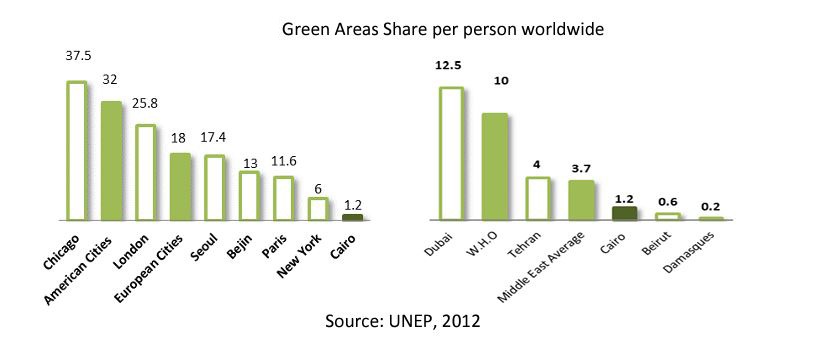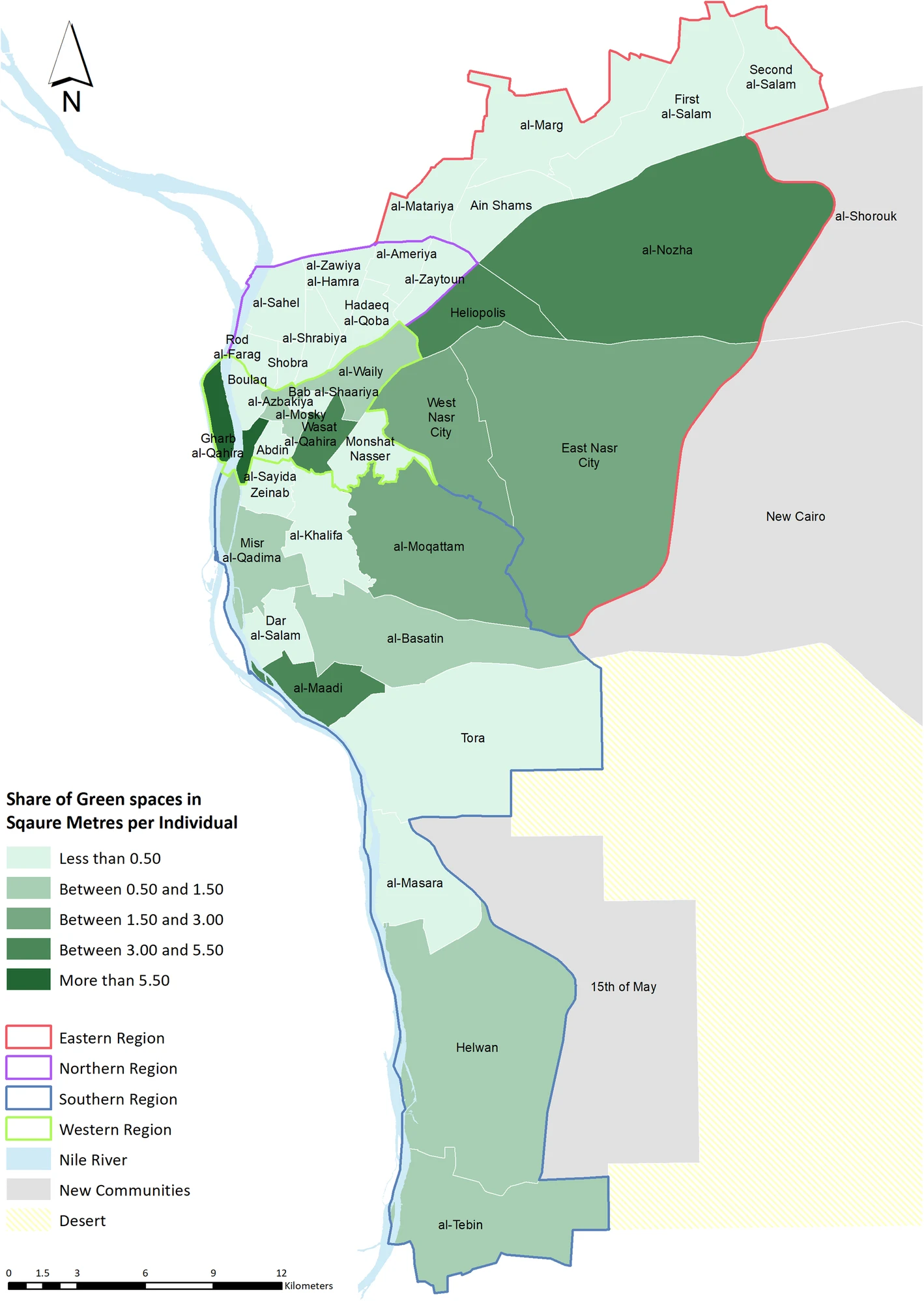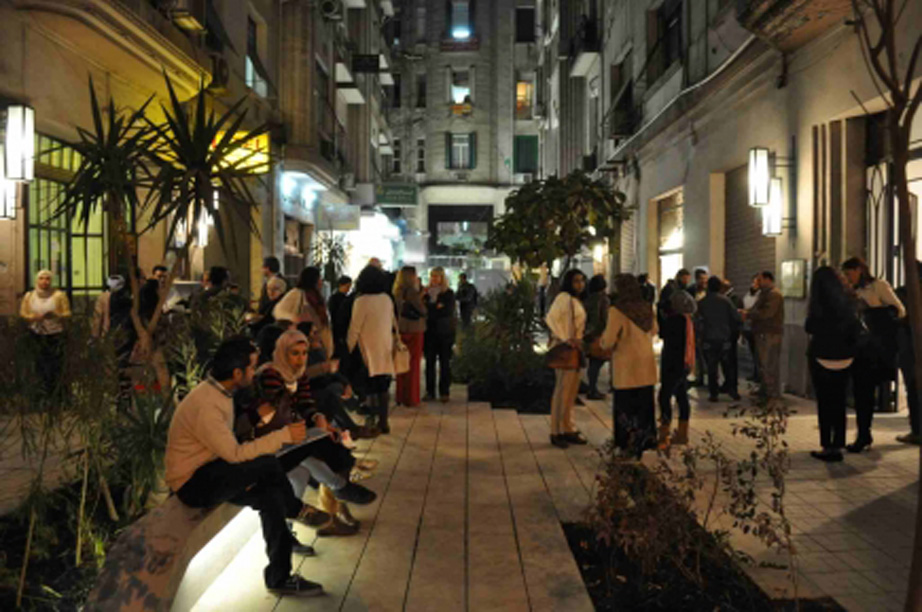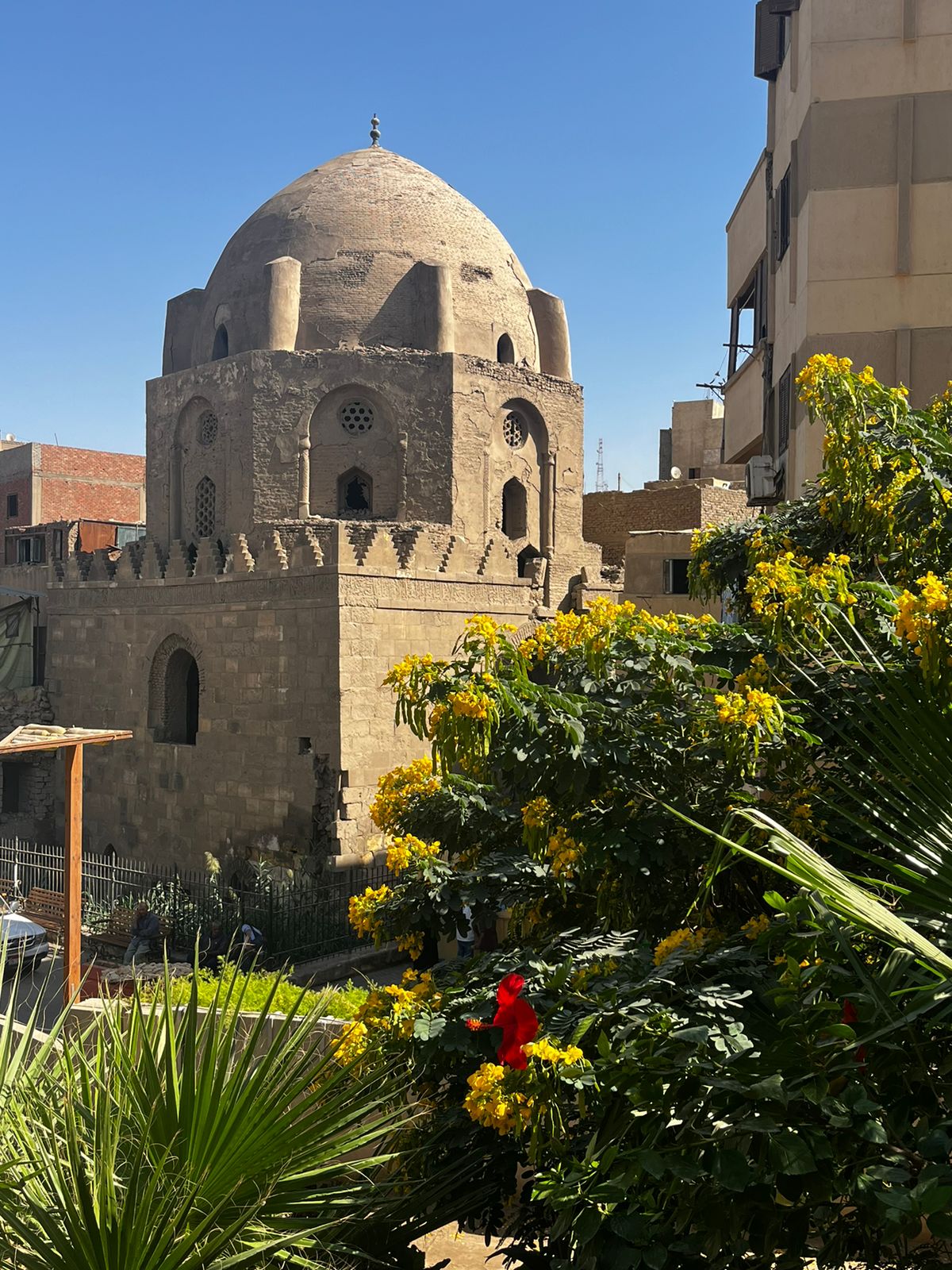What will we talk about?
In the bustling metropolises of the Middle East and North Africa (MENA) region, where busy streets and new developments dominate the landscape, the quest for green spaces has become a pressing concern. Amidst the concrete jungles, pocket park projects are blossoming more and more and show the path for more resilient local communities. These small, strategically designed green patches seamlessly integrate into the urban fabric and redefine urban landscapes by providing breathing spaces away from the hustle and bustle of the city and fostering a harmonious coexistence between nature and buildings.
The MENA region, known for its arid climate and rapid urbanization, has faced challenges in maintaining a balance between modern development and preserving the environment. As cities expand, populations soar, and climate change leads to harsher climatic conditions, the need for green spaces becomes increasingly urgent. Enter pocket parks, which offer a small-scale solution that can be implemented where people need it the most – next to their homes. When well planned, their potential as cool oases, biodiversity hotspots and water infiltration grounds even extends to improving the sense of belonging of the local populations.
Join us to explore the growing interest in pocket parks in the MENA region, delving into the benefits they bring, the challenges they address, and the potential they hold for creating more resilient societies.
The Problem
Historical preservation involves much more than just renovating buildings
In Egypt, a country steeped in millennia of history, the significance of preserving heritage buildings and places cannot be overstated. Beyond being mere architectural treasures, these structures offer a tangible connection to the cultural identity and heritage of the nation. Traditionally, historic preservation efforts have often focused on urban design and iconic landmarks, treating them as isolated entities. We are convinced that preservation extends beyond individual structures: it requires a holistic approach that encompasses the entire urban landscape.
In the heart of Cairo, where every stone has a story to tell, the challenge of historical preservation faces a particular challenge – the issue of unused plots. Run-down disregarded plots are more prevalent in the historical center compared to other districts, primarily due to the current emphasis on developing new neighborhoods. Unfortunately, the historical city has experienced neglect, with limited investments focused on the replacement or renovation of specific buildings in distinct locations. This process often occurs without the guidance of specialists, resulting in the overall neglect of entire districts. Many vacant plots with precarious land tenant situations have been filled in by informal settlements, which are rundown and offer no long-term solution for those left-over spaces.
This phenomenon threatens the city’s historical fabric, as these unused plots lie in neglect and disrepair and degrade the atmosphere and attractivity of the neighborhood. Beyond the obvious aesthetic aspect, heritage enhances the value of a city in various ways, with one of the most crucial aspects being the promotion of a sense of community belonging and resilience. By providing a platform for people to collaborate, heritage fosters a collective effort to strengthen both economic and cultural development, creating unique opportunities for the community to thrive.
“Heritage is found to contribute to the sense of place as a source of pride, and by supporting feelings of distinctiveness and senses of continuity across time.”
Future is Here!
Although the attention is often centered around cities like Paris or Barcelona in the field of climate adaptation, the front runners lie in cities like Cairo. The challenges posed by climate change, such as droughts, heat islands,etc.. are daily issues in Cairo, forcing locals to innovate and adapt to the relentless demands of this challenging environment and serving as an example for other cities situated in mild climates. “Though average annual temperatures have increased at an overall rate of 0.1°C per decade between 1901 and 2013, the rate of temperature rise in the past thirty years alone has shot up to an alarming 0.53°C per decade.” according to Middle East Regional Studies expert Al-Mailam et al. The rapid urban population growth rate of 2.7% since 2003 also embodies a challenge that many other world cities will have to face in the future. As these challenges become increasingly prevalent worldwide, cities elsewhere have a valuable opportunity to gain insights and lessons from the experiences of cities in the MENA region, particularly Cairo, in navigating and overcoming the hurdles posed by an evolving climate.
No green to be seen
Lack of green areas is one of the most important reasons for quality-of-life degradation in Cairo City. The city suffers from major defects in the distribution of green areas, and there is no clear gradation in the sizes or distribution of green areas in most neighborhoods of Cairo City. The high density of Cairo and the low share of open spaces per inhabitant set a ceiling for the ambitions of increasing the green areas and, therefore, require creative solutions for this major problem. The UNEP Report of 2012 shows that Cairo has much lower shares of green spaces per inhabitant (1.2 per person) compared to the American cities average (32 per person) and European cities average (18 per person). In the Middle-Eastern context, Cairo is also lower than the average, which lies at 3,2 per person (see figure bellow).
The local administration aims to change this, but change is not easy. The Strategic document Egypt Vision 2030 from 2018 stated that to this date, the greenspaces per capita in Egyptian cities was 0,85m2 and should increase to 1m2 in 2020 and 3m2 in 2030. Nonetheless, a study by Aly and Dimitrijevic, experts in public parks in Cairo, showed that from 2017 to 2020, the green space per capita has reduced from 0.87 to 0.74 m2. This highlights the growing need to focus on the provision of green spaces while the current urban development neglects these. Moreover, these green spaces are unequally distributed in the city fabric, with “83% of Cairo’s population live in districts with an individual share of green spaces less than 1.5 m2”( Aly and Dimitrijevic, 2022).

Share of Green Areas per inhabitant worldwide in 2012. Source: UNEP

Unequal distribution on green spaces in Cairo, source: Aly and Dimitrijevic, 2022
A green solution
Have you ever thought about the way small actions can actually reshape the entire city? We believe Pocket Parks can be the key to shaping the cities of tomorrow in an experimental, people-centric and sustainable approach directly responding to the needs of the community. The main element of the change is the citizens themselves. When it comes to incorporating greenery into the city’s plan, there is no one-size-fits-all. We should observe inhabitants’ habits, meet up with people, listen to their needs and study their narratives related to these urban spaces, abandoned plots, or their whole district.
Pocket parks bring life to unused spaces:
Imagine small, charming green spots nested between buildings, turning sealed and underused areas into lively spaces. That’s the magic of pocket parks! Rundown plots are the perfect candidate for a pocket park – they provide space in the densely built fabric of historical centers and often already have some wild plants taking over the rubbles. With their high community and ecological value, pocket parks work wonders in bringing life back to neglected plots. A study by urban researchers Hamdy and Plaku highlighted that they provide many benefits, such as:
- Reinforce a sense of place and better community image
- Prompting urban regeneration in dormant/ declining communities
- Safety and security enhancements
- Social Inclusion
- Noise buffer
- A micro-sustainable community
- Protect environmental resources and improve the micro-climate while preserving nature’s presence in the city
- Promoting health and well-being
- Increase city biodiversity by infusing it on a neighborhood level
- Promoting and Supporting local economies
The downtown district of Cairo has many successful examples of the transformation of empty plots into lively pedestrian zones with multiple activities and greenery which was often initiated by local initiatives, as illustrated by the example of the Kodak Passageway (see photos bellow). Unfortunately, less economically lively residential neighborhoods still suffer from car-centered public spaces, and inhabitants have fewer opportunities to find green oases, according to Hamdy and Plaku.


Kodak Passageway, image source: Cairo Urban Initiatives Platform
Urban acupuncture: regenerating public space through small urban interventions
Urban acupuncture is a local design approach that promotes urban regeneration through targeted interventions in public spaces. This approach is an adaptable framework for urban renewal, focusing on neglected spaces, incremental urban strategies, and consolidating social infrastructure. Pocket parks and community gardens are great examples of such a small-scale, community-focused approach (learn more about community gardens in our previous article!). Indeed, these small-scale interventions can be planned in a shorter time frame than traditional larger parks. Their easy implementation makes them also more accessible to grassroots initiatives or larger organizations. In Cairo, an example of such an initiative is a partnership between Megawra, an architectural office specializing in conservation and heritage management, and the Built Environment Collective, an NGO specializing in place-based cultural and urban development. They partnered to run Athar Lina, an initiative working in Historic Cairo which promotes heritage as a driver for development.
Furthermore, Urban Acupuncture has the particularity of relying on the involvement of local communities. In the case of urban parks, this can be the condition of their survival through time. Indeed, Aly and Dimitrijevic, have shown that green spaces in Cairo are constantly at threat of being replaced with other uses or built structures. Indeed, they identified that many green spaces disappear or decay because of high costs linked to maintenance and competing economic interests with other uses. A solution to this can be creating a sense of ownership from the local populations to help maintain and protect these spaces from transformations to other uses. If a park is loved, people will stand for it! This is also true for cultural heritage as the Athar Lina initiative emphasizes that “only when cultural heritage is beneficial to the community, will the community become an active partner in its conservation.”
Pocket parks and local narrative: an example
Can pocket parks be the catalyst for sustaining a resilient society? Let’s shed light on an example which does just that: Al-Khalifa Heritage and Environment Park. This park utilizes water from dewatering historic domes to nurture a new community space. The project transformed a 3000 sqm area on an elongated ridge into a vibrant park featuring lush greenery, recreational zones, women-friendly sports facilities, childcare services, retail outlets, eateries, and clean waste disposal facilities. The park’s irrigation system relies on water extracted from the dewatering process of the revered al-Ashraf Khalil and Fatima Khatun Domes, dating back to the 13th century and situated adjacent to the park.
Situated at the heart of al-Khalifa, this park serves as a vital link to the Zaynhum Public Housing Project, marking a significant stride in social and economic advancement across various sectors, including environment, health, education, employment, heritage preservation, tourism promotion, and overall enhancement of living standards within the vicinity. Moreover, this urban oasis acts as a focal point for local narratives, fostering a profound sense of belonging within this historically rich district while empowering the community to embrace and celebrate its heritage.


Left: View from Al-Khalifa Park, which is irrigated by groundwater dewatering at “al-Ashraf Khalil” Dome.
Right: view from the minaret of Shaykhu “Shaykhu al-Umari an-Nasiri” mosque showing the surrounding district. Source: Omar Zahran
To sum up
In this article, we wanted to shed light on how pocket parks bring life to unused spaces, provide a unique opportunity for people to connect with nature and build a sense of community. They promote sustainability by offering refreshing islands in a harsh climate, promoting social and cultural activities and bringing people together. This helps achieve more resilient cities that prioritize the environment and people’s health.
The implementation of such small spaces offers the advantage of being more easily incorporated into the dense city fabric than larger urban green spaces and allows for grassroots initiatives and citizen participation. These are enough reasons why they should be included in city planning processes, don’t you think? As architects, urban designers and researchers, we should observe, rethink, and adapt to try to change expected threats into opportunities. Vacant land in cities are an essential future urban resource.
Key learnings
Pocket Parks can benefit the city in the following ways:
Revitalize neglected areas
Serve as a valuable climate adaptation and public health strategy
Enhance the local character and sense of place
Tell the story of the local history and heritage
Work as a catalyst for additional investment in the local community